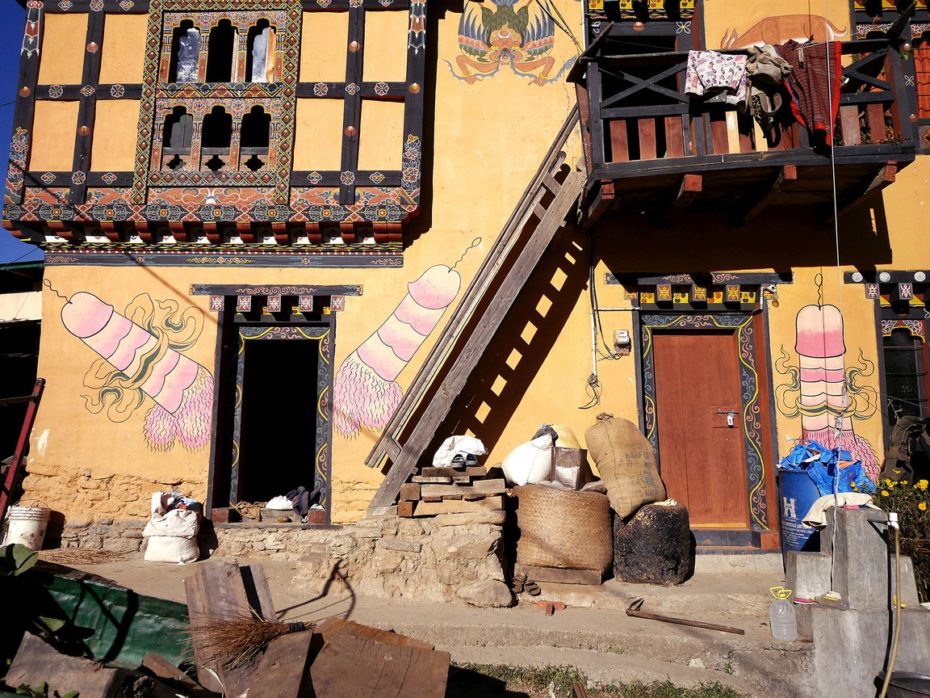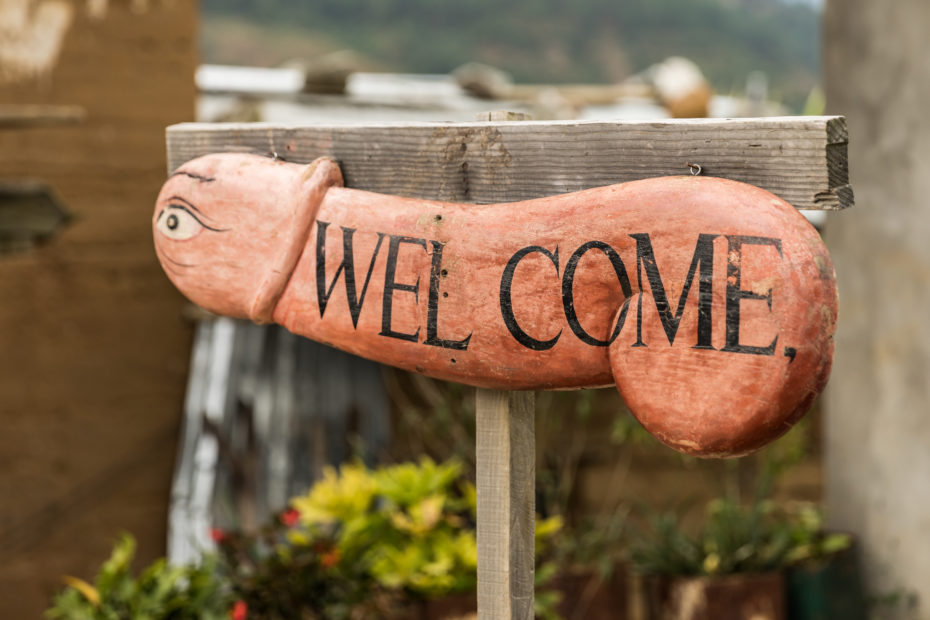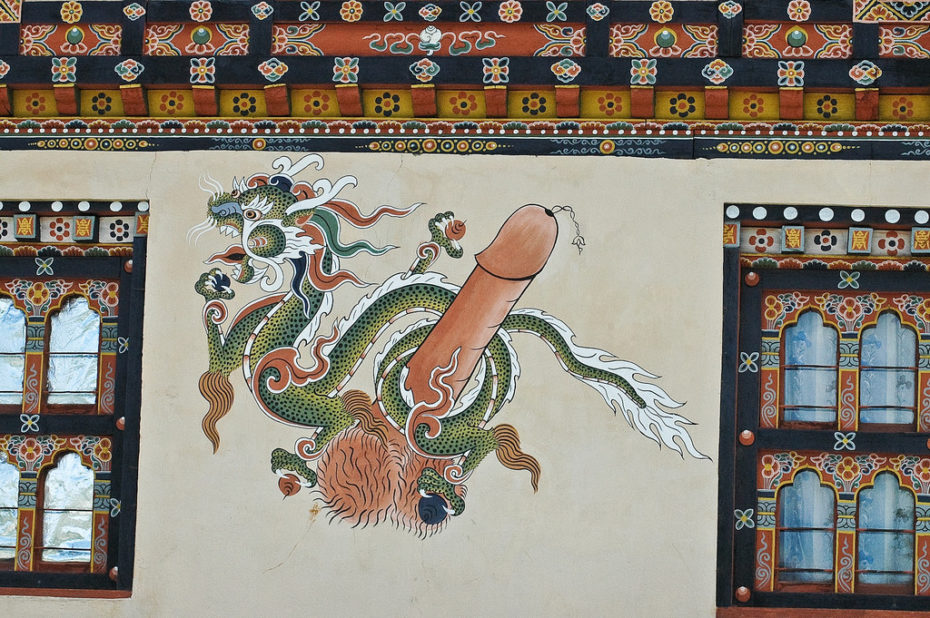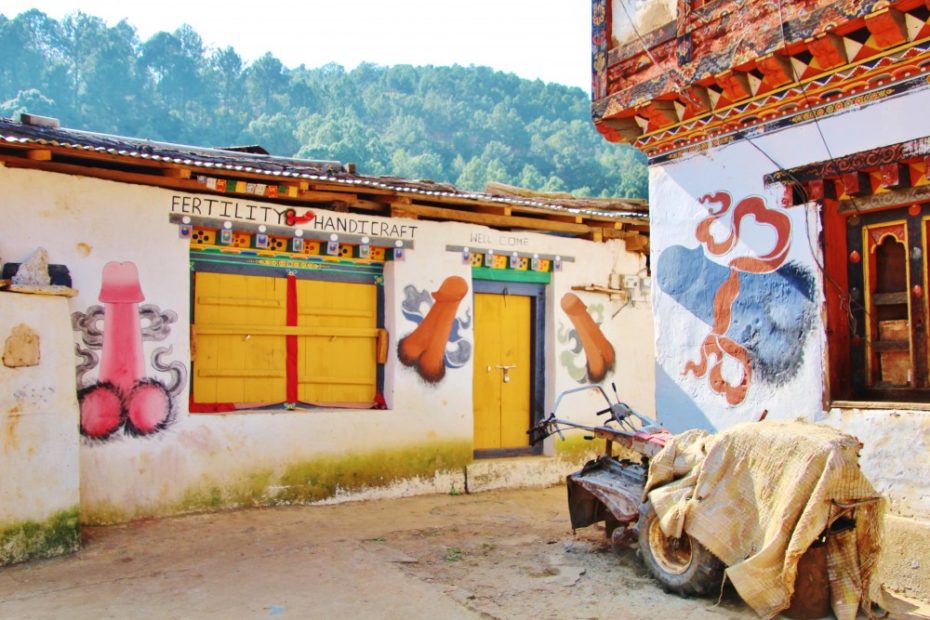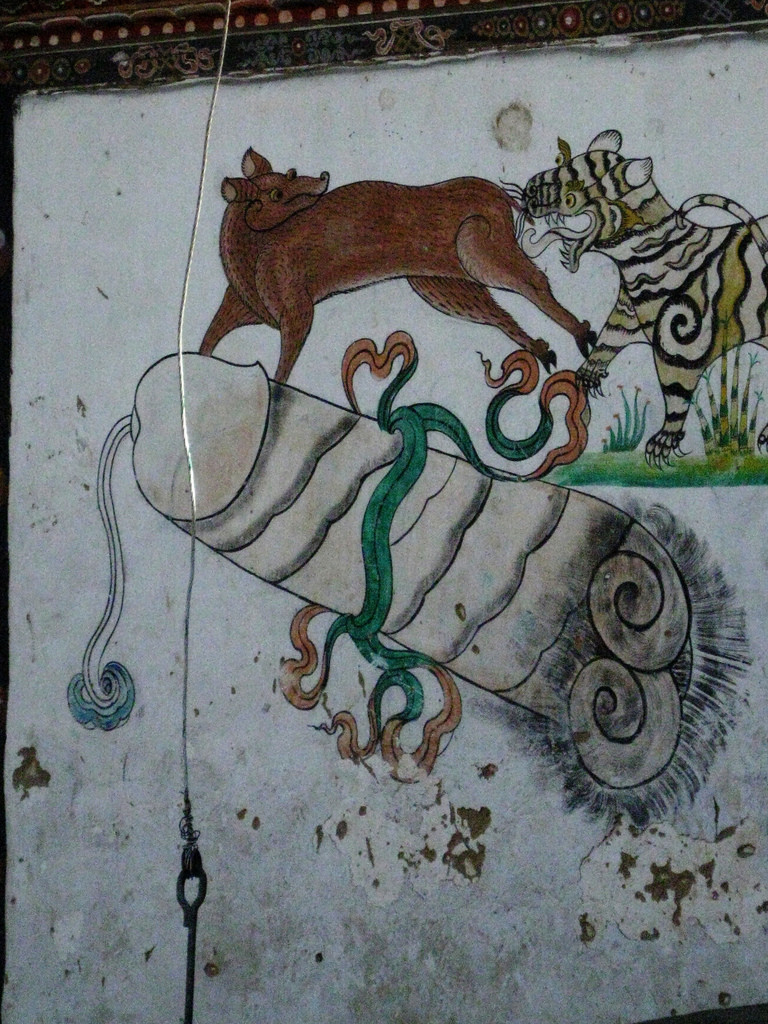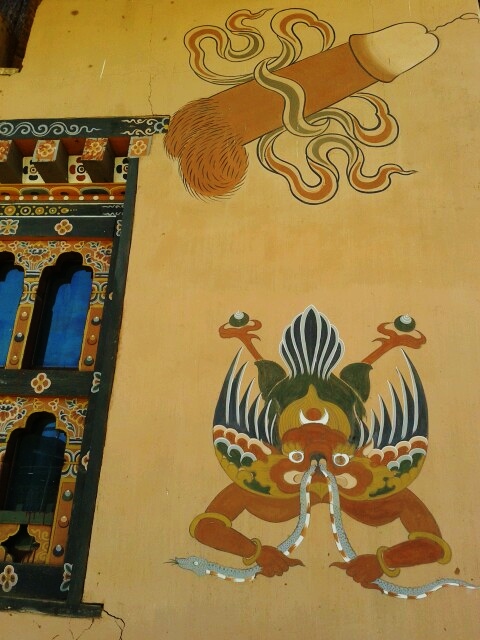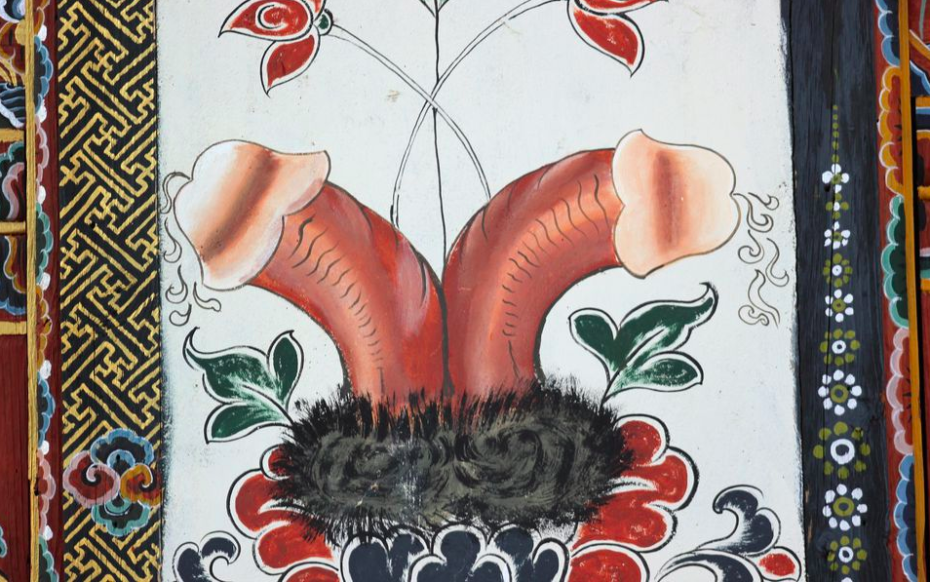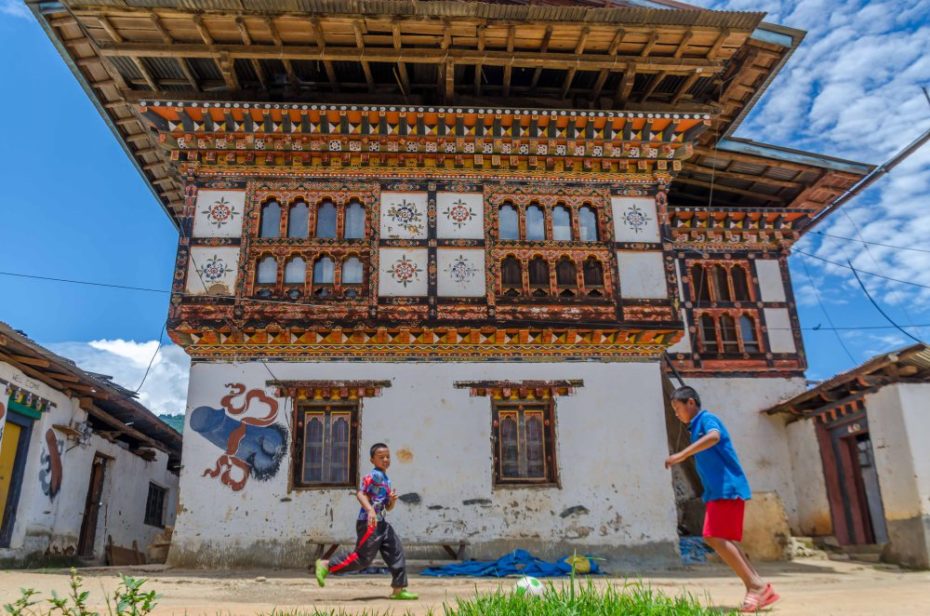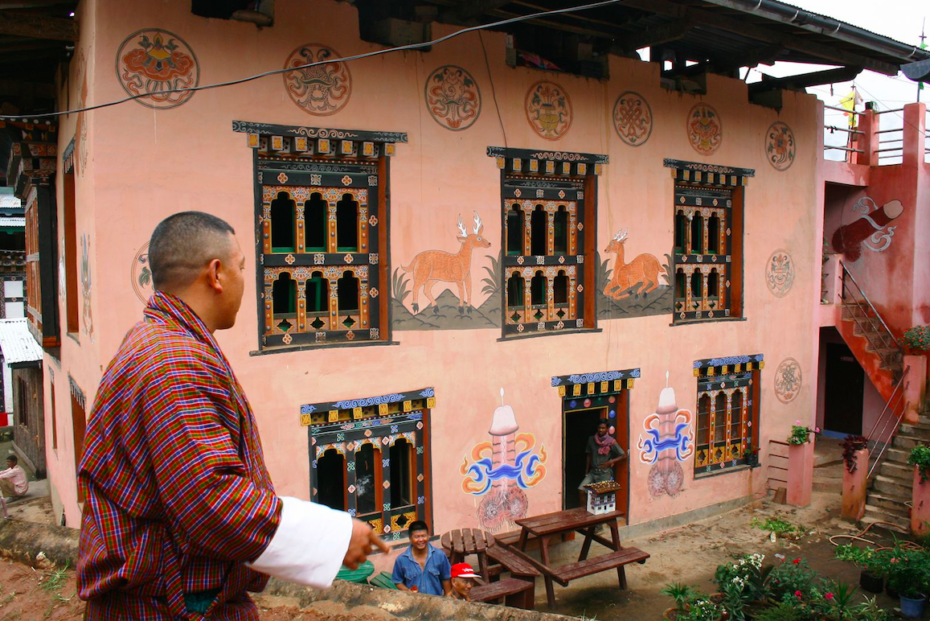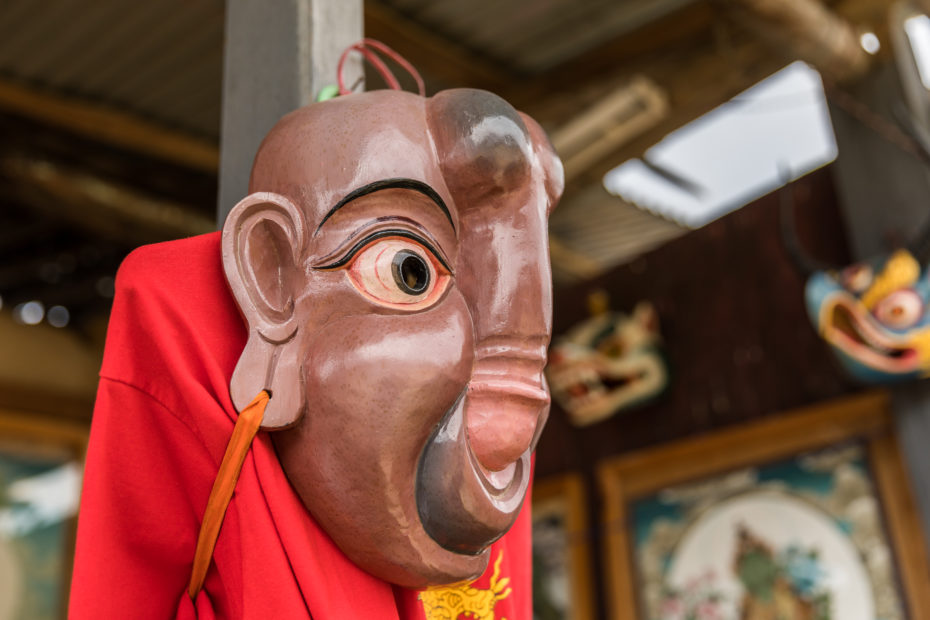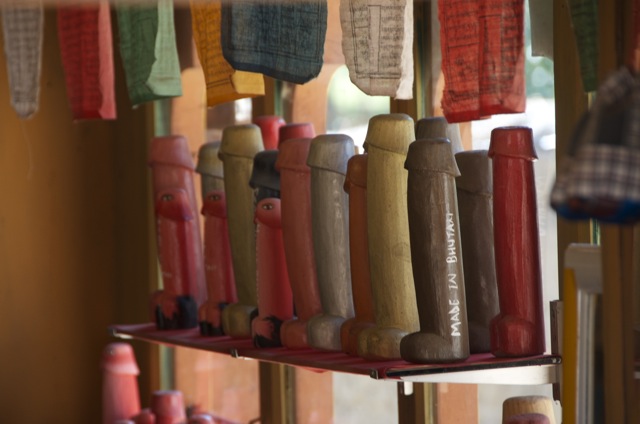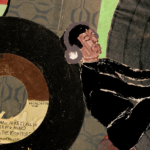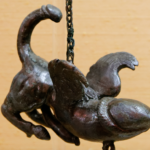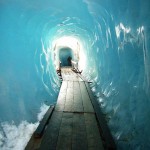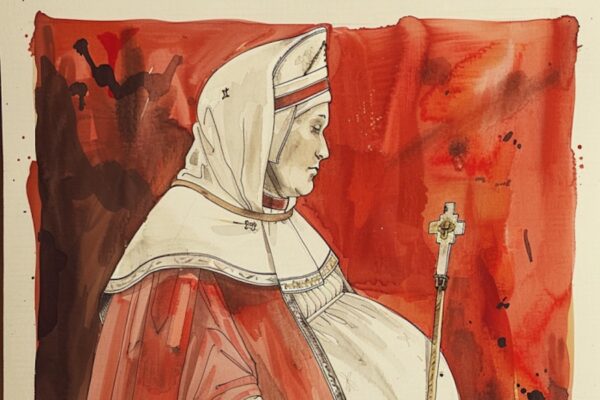Deep in the Himalayas you’ll find Bhutan, an ancient kingdom with an equally ancient Buddhist monastery that is bound to make you blush. It’s called Chimi Lhakhang, and it’s a temple dedicated to fertility and the “sacred phallus.” Emphasis on the phallus.
A carved “welcome” sign invites Western visitors to explore the monastery and its surrounding village, dedicated entirely to the worship of the sexual organ. Foreigners only began discovering Bhutan when the country opened its borders to tourism in the 1970s, but the temple was built in 1499 by Ngawang Choegyel, the 14th Drukpa hierarch. And on closer inspection, it too is covered in penis art, intricately painted on the walls.
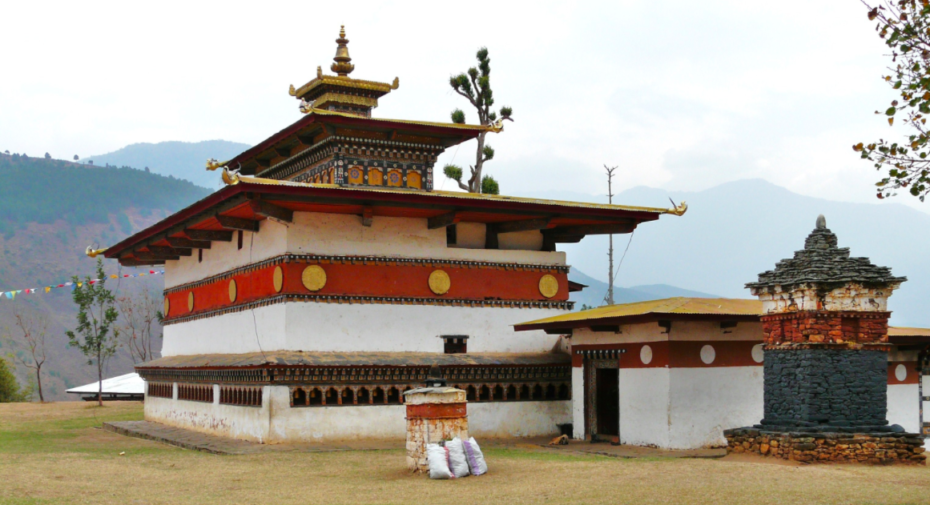
The temple. ©Bhutanindex
Why build a penis monastery here, in a quiet village surrounded by paddy fields? Legend has it that a “demonic” dog was refusing to let villagers cross the nearby Dochula Pass, and that the 15th century yogi Drupka Kunley trapped the demon in a chorten, the smaller structure outside of the temple that remains to this day. It’s a fairly modest structure, and from a distance its neighbouring houses appear to make up a run-of-the-mill Himalayan village. Of course, a closer look reveals some of the seriously colourful embellishments…
So why was this yogi so into penises? Locals called Kunley “the Divine Madman” due to his sexual methods of enlightenment, and to this day he’s pretty much Buddhism’s Black Sheep. He’s one of the only Buddhist teachers to consistently appear topless in paintings, and also earned the nickname “The Saint of 5,000 Women” in his life.
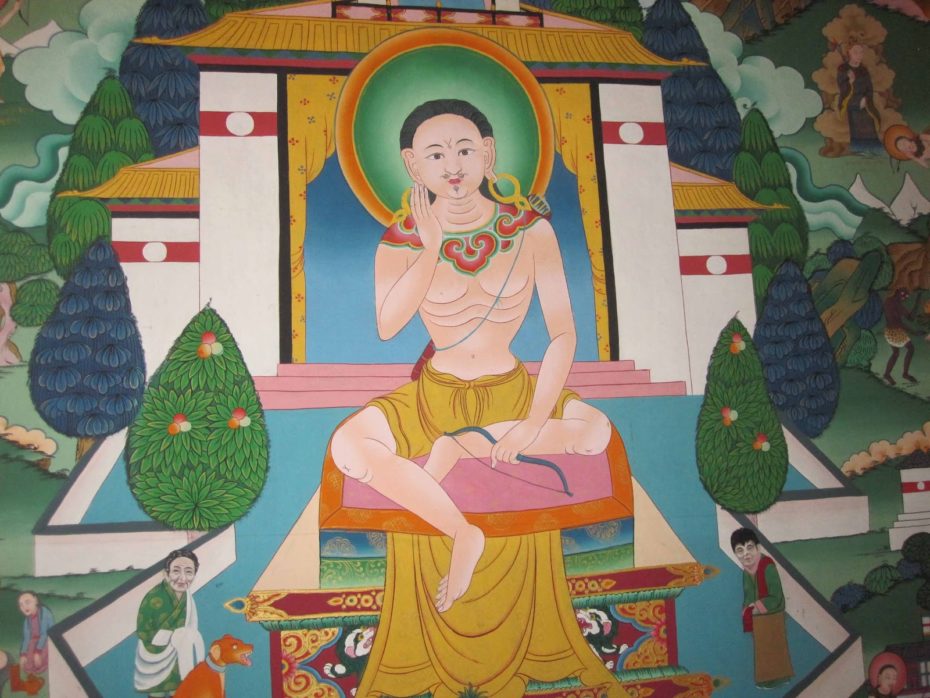
He’s also the one credited for amping up the area’s decorative phallus game, and proclaimed his own penis a “Thunderbolt of Flaming Wisdom” which he used to combat evil. He was also known to have a outrageous sense of humour, and his followers saw his “penis temple” as an audacious gesture against what the “rigidity” of other monasteries.
As symbols of fertility and life, the presence of penises — on rooftops, on walls, you name it — would ward off negativity. Kunley’s particular method of healing was also to touch his “thunderbolt” to the heads of visitors. It’s also how he vanquished the demon dog, apparently.
Today, locals continue to carve wooden phalluses for good luck, worship, and the increasing amount of passing tourists. The symbol is just another part of everyday life for residents, who go about their daily routine without giving them a second glance…
The region is proud of its history, and upon entering a sign explains to outsiders that the penises “symbolise the discomfort that society expresses when facing the truth.” Another monastery in the area, Tango Goemba, is even the guardian of a thangka (a religious painting) that Kunley is rumoured to have urinated on.
It’s the dawn of the internet that really ushered in a new financial boom for the monastery and Bhutan in general — quite a feat, given the reclusive track-record of the country. Until 1999, television and internet were actually illegal there. “Bhutan was long kept a secret from the rest of the world” stated a PBS journalist in 2002; it’s made up of unspoiled landscapes, and opening the floodgates to tourism could’ve jeopardised that cultural heritage. Alas, the Internet is prime territory for a penis monastery to go viral, and the village hasn’t been the same since.
These days, a tourist visa to Bhutan can cost you up to $250 per day. Curious wanderers and couples hoping to conceive still make the pilgrimage to its notorious monastery, and often a Monk’s blessing will include a prediction of the hypothetical baby’s name and gender. There are even a few restaurants in the village, so you can make a full-blown day trip out of your expedition to what one visitor called “the Disneyland of Penises.”
Learn more about visiting Bhutan here.


